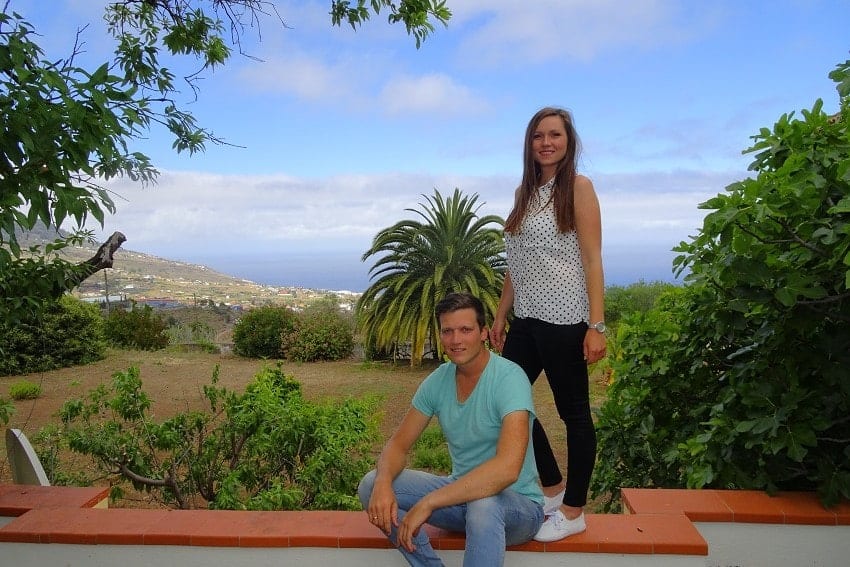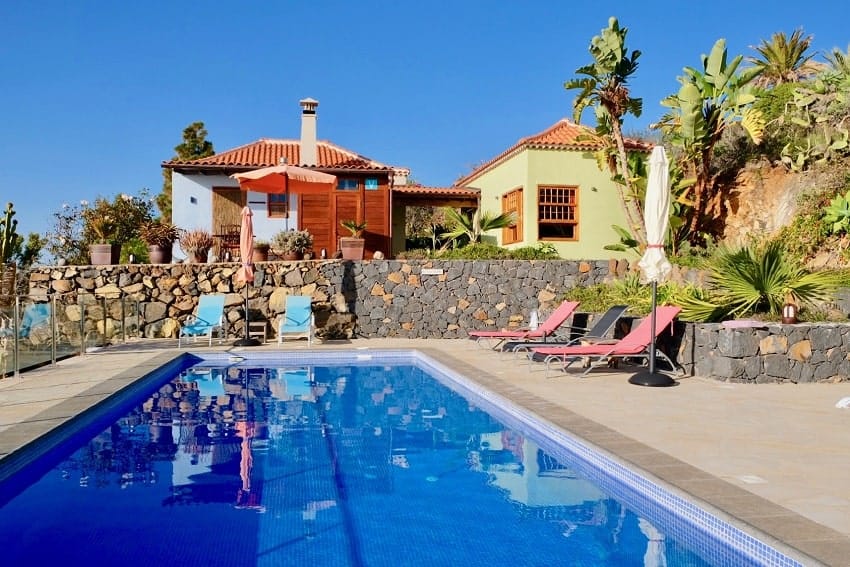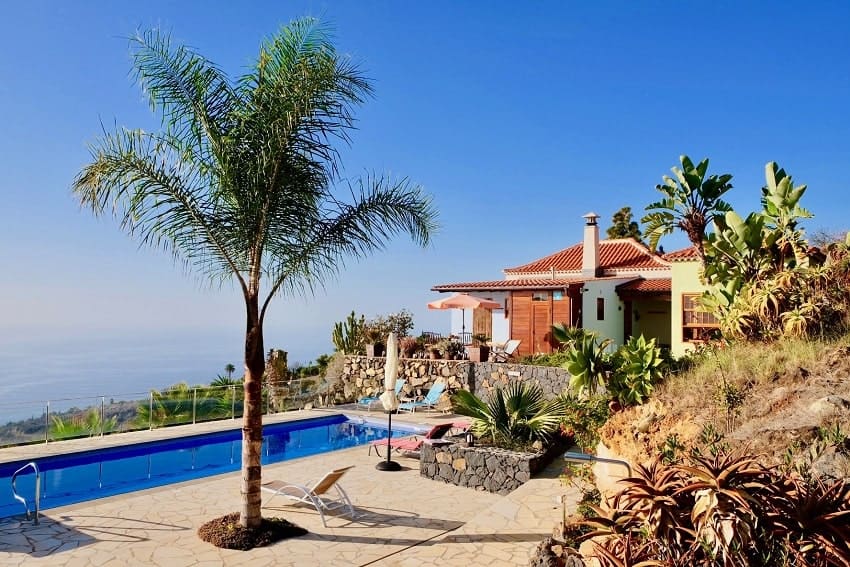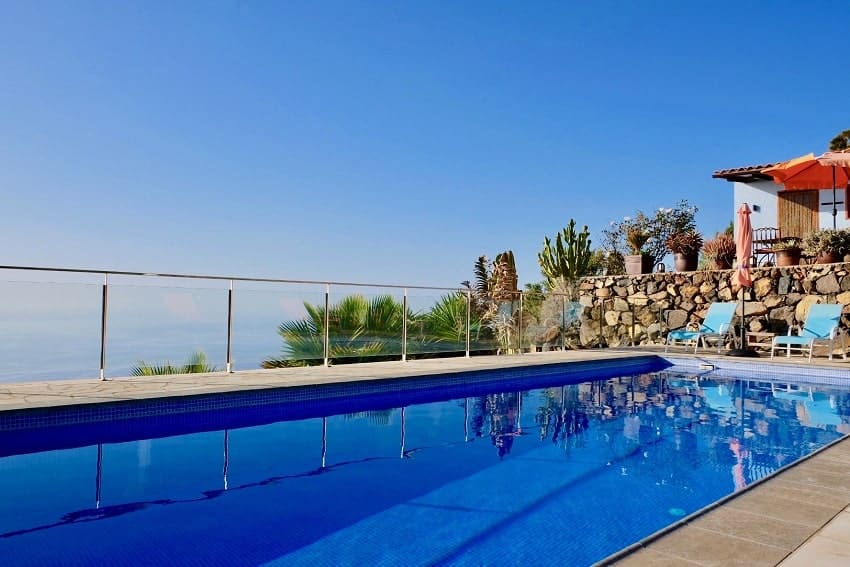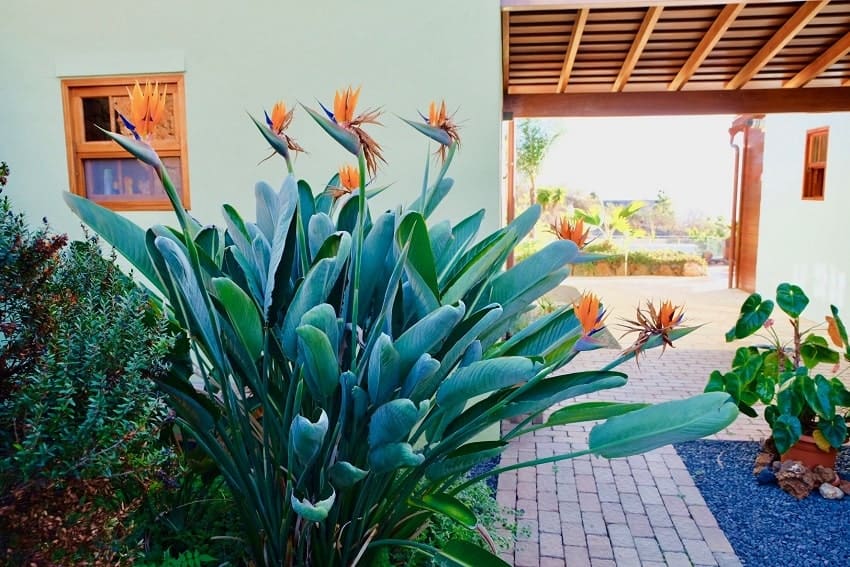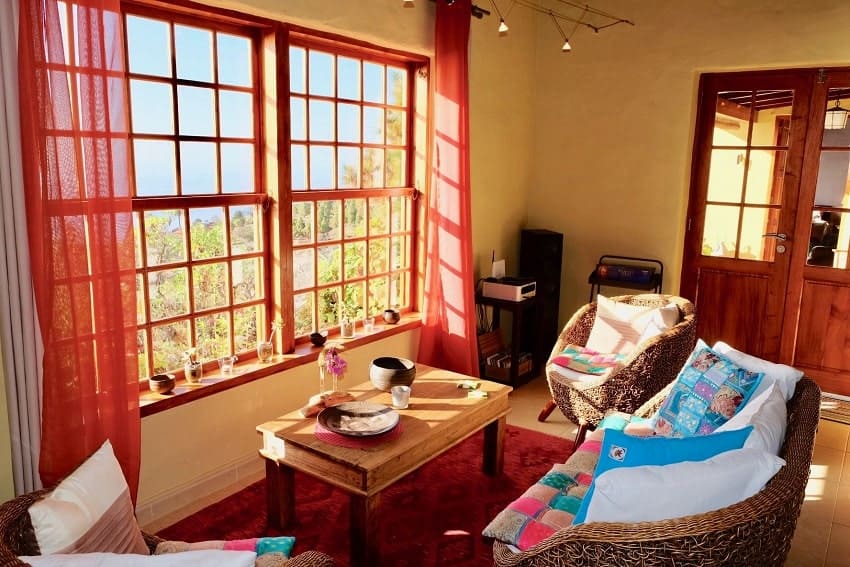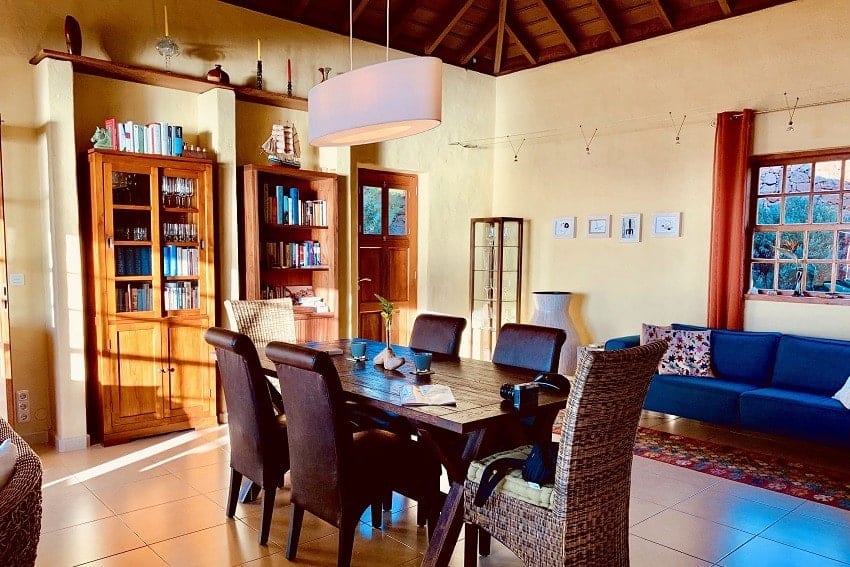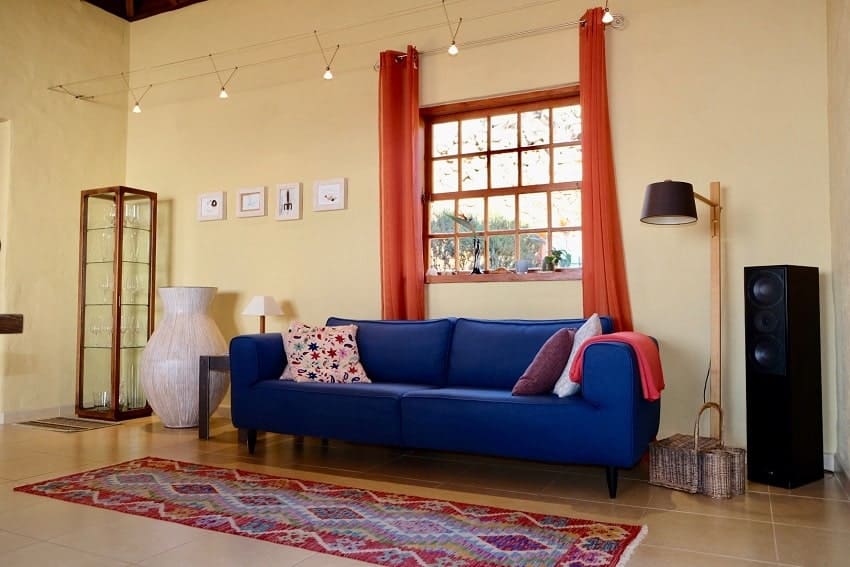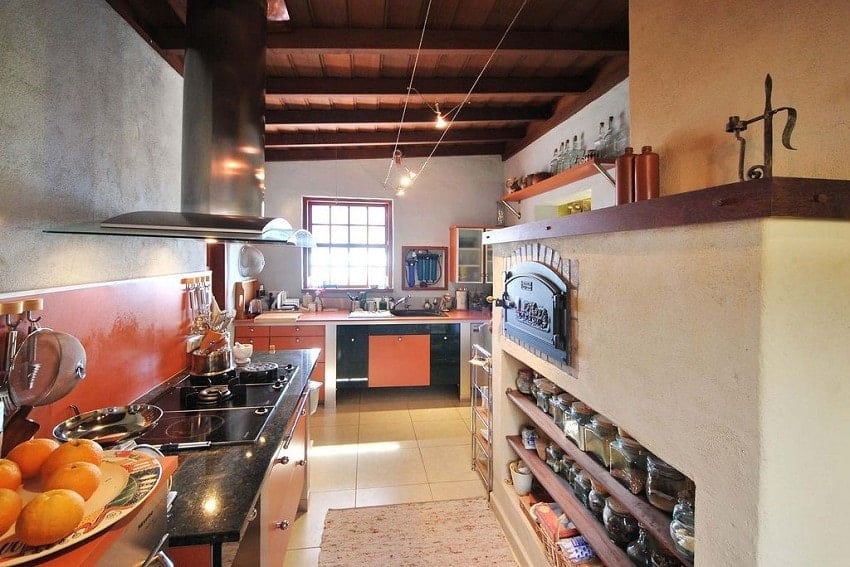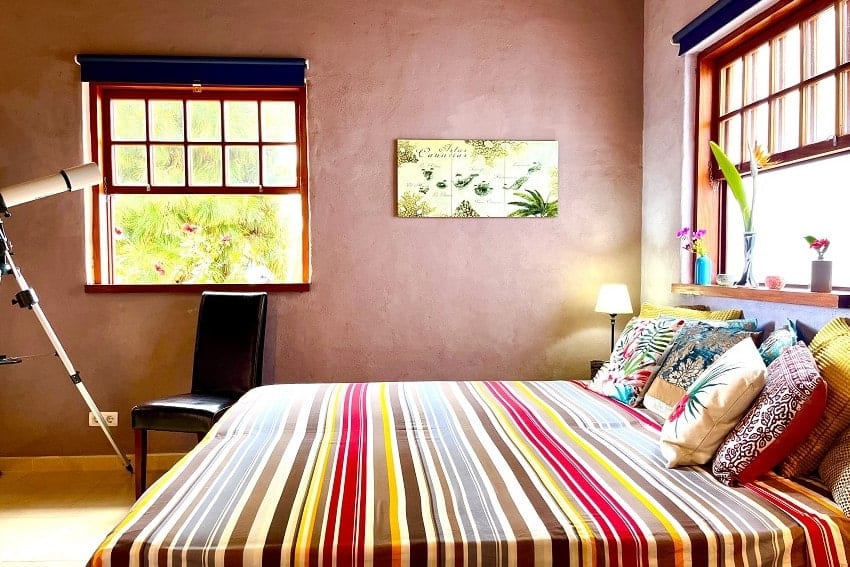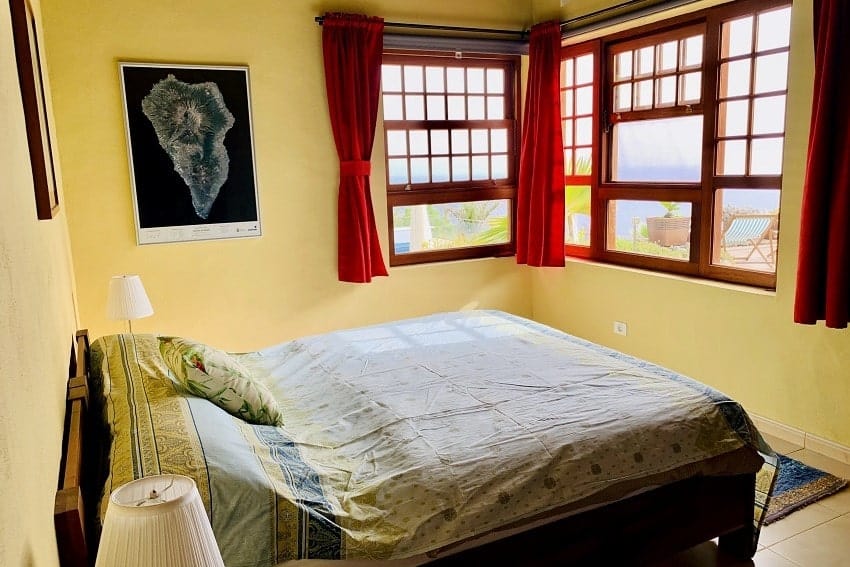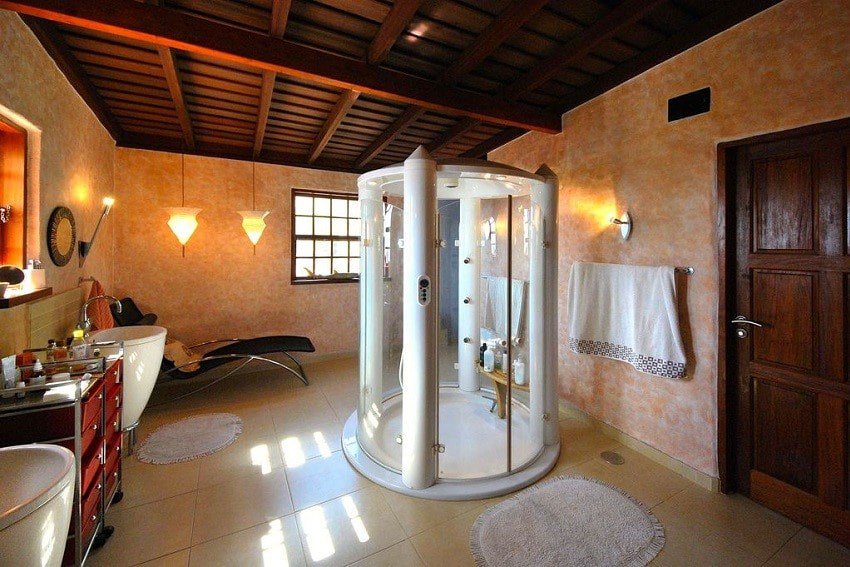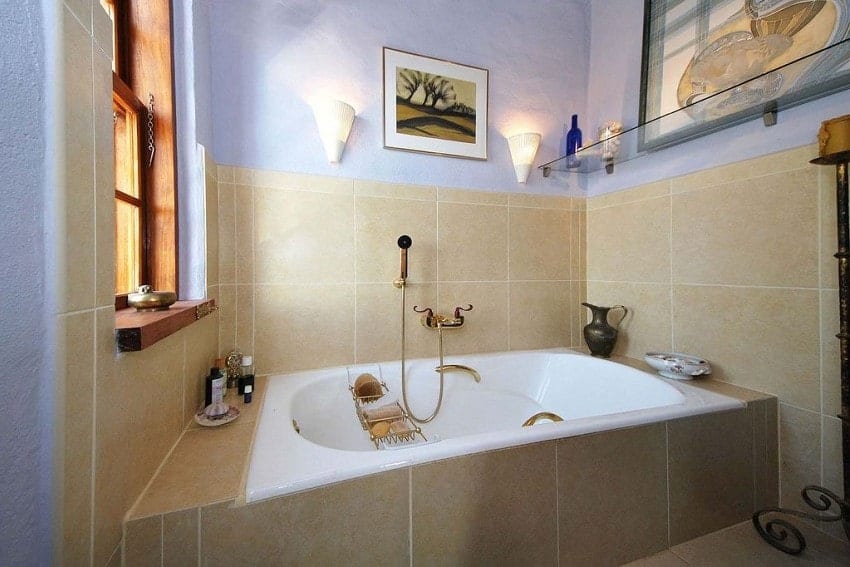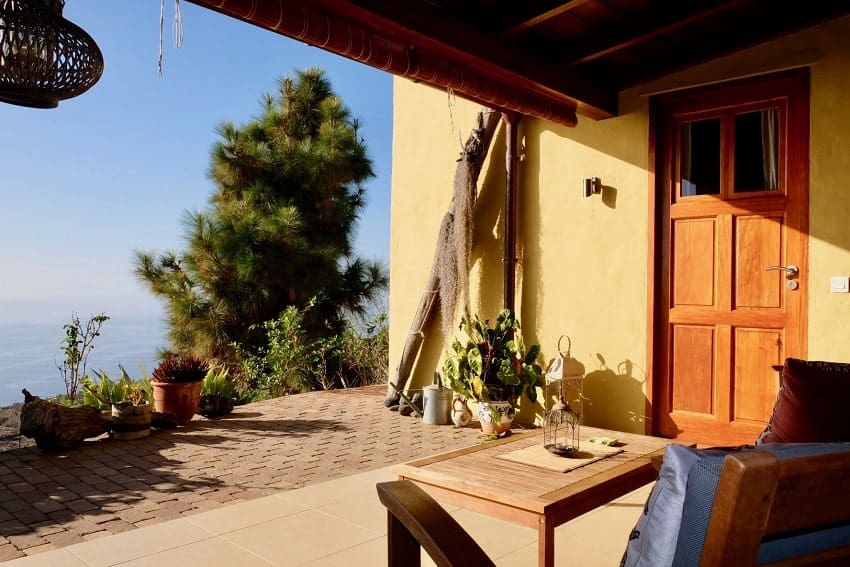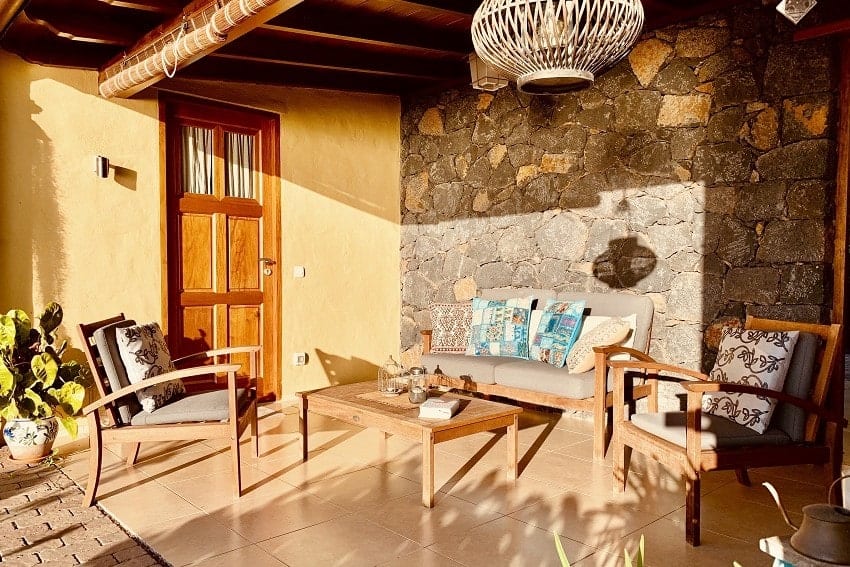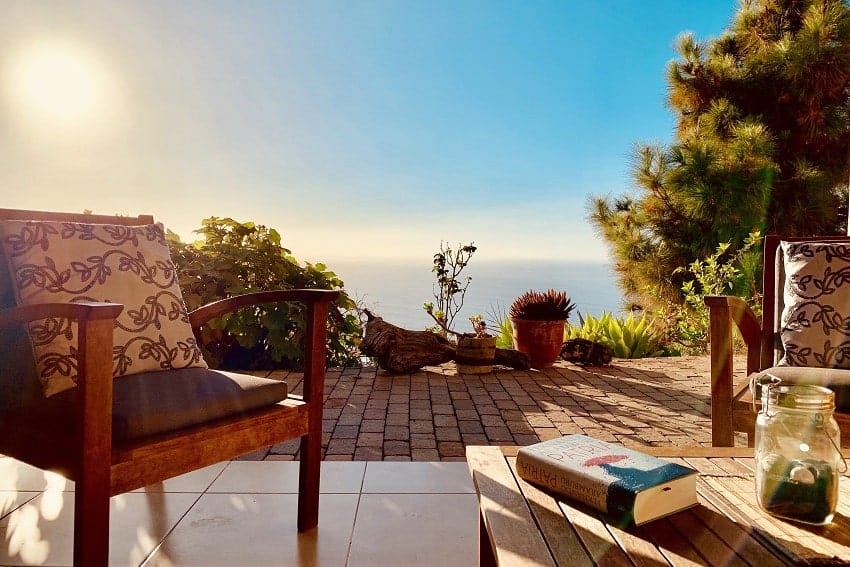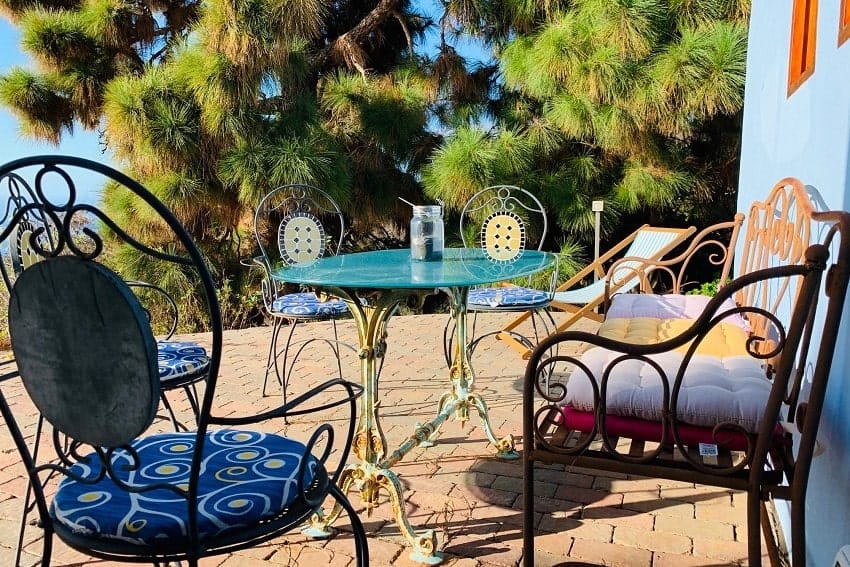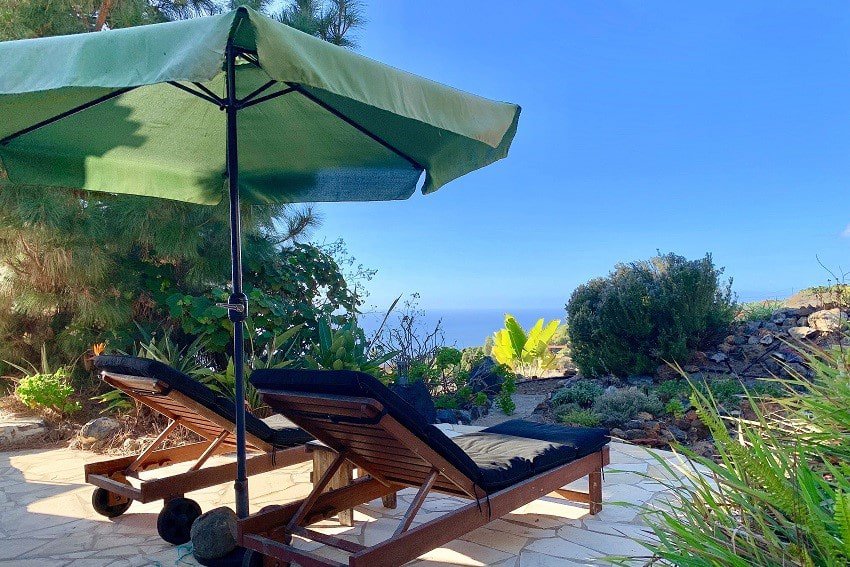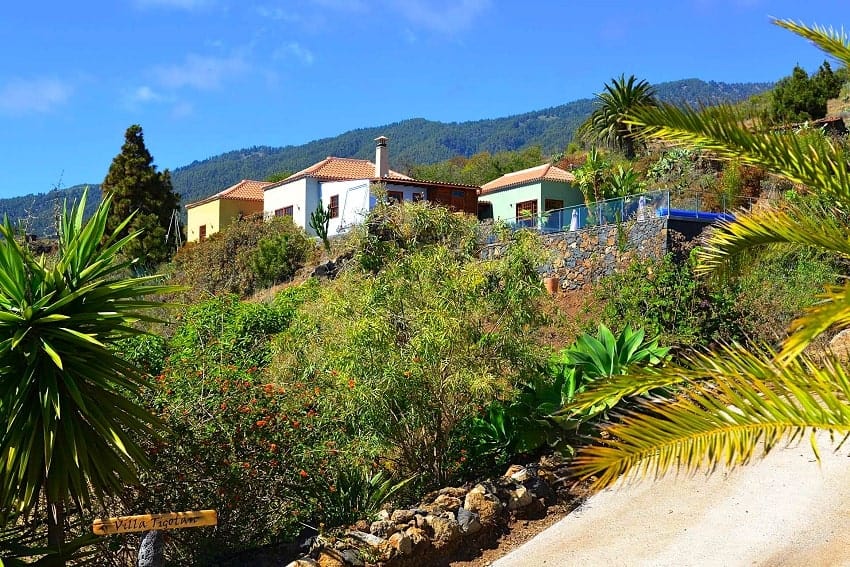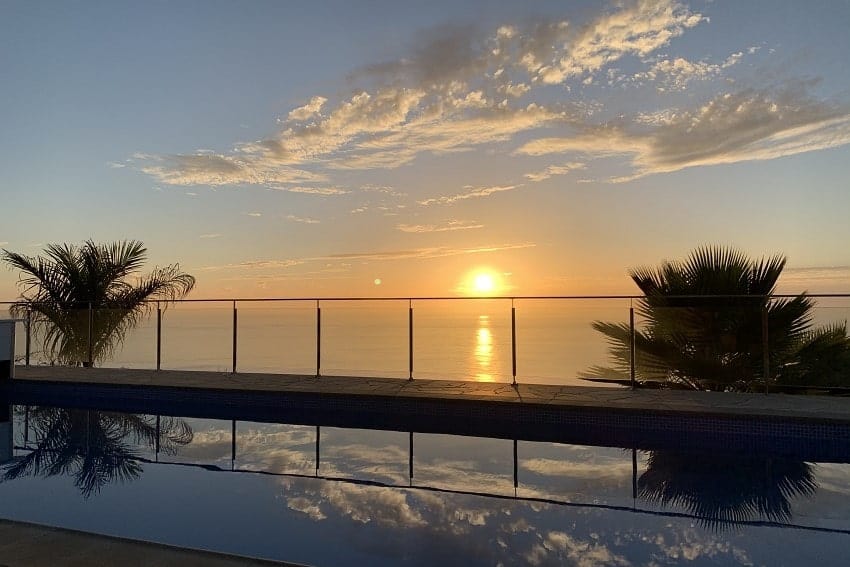Availability
Villa Tigotan
 1
1  3 3
3 3 







Villa Tigotan in Tijarafe is an inviting home, with its traditional construction and pure luxury, boasting a large private pool and an incomparable view of the Atlantic.
Tigotan literally means “starry sky” in the language of the natives of La Palma, and the nightly view of the Milky Way above the villa means that guests quickly understand why this name was chosen.
The villa sits on a 14,000 m2 plot and has a total living space of 160 m² comprising a living room, a fully equipped kitchen, three bedrooms and three bathrooms.
The villa consists of three buildings. In the main house, you will find the living room, the kitchen and a bathroom. You reach the two further buildings via the terrace. In one of the buildings, there are two bedrooms and a large bathroom, and in the other, there is another bedroom with an en-suite bathroom.
The villa has a traditional style, with wood and natural materials which are typical of the island. The classic Canarian wooden ceilings give the villa an exceptional atmosphere. In the comfortable living area, you will enjoy impressive sea views and a large fireplace built using natural stones.
One of the villa’s special highlights is the large 12 m heated private pool. Other highlights include a wellness bathroom, an orchard and a fantastic 180-degree sea view.
You will always find a sunny – or shady – spot on one of the five romantic terraces.
Facilities
- 1 Double Bed 160x200
- 1 Double Bed 180x200
- 1 Outdoor Hot & Cold Shower
- 2 Single Beds 90x200
- 3 Bathrooms
- 3 Double Bedrooms
- Baby Cot
- Bathtub
- Beach Towels
- Bed Linen & Towels are Provided
- Bidet
- CD - Player
- Chill-Out Area
- Chimney
- Coffee Maker
- Covered Terrace
- Dishwasher
- Dryer
- DVD - Player
- Electric Stove 4 Hobs
- Espresso Machine
- Floor Heating
- Freezer
- Fruit Trees
- Garden
- Gas Stove 2 Hobs
- Grill
- Hair Dryer
- Herb Garden
- High Chair
- Internet - WiFi
- Iron
- Ironing Board
- Kitchen
- Living Room with Integrated Dining Room
- Outdoor Furniture
- Oven
- Pad Coffee Machine
- Parking Space
- Pool Electrically Heated (extra charge)
- Pool Solar Heated
- Private Swimming Pool
- Radio
- Safe
- SAT-TV
- Shower
- Shower with Hydromassage
- Sofa
- Sun Umbrellas
- Sunbeds
- Telescope
- Terrace
- Toaster
- Washing Machine
- Wheelchair Accessible
- Writing Desk
Internet
Location and Distances
Medical help
Check In / Check Out
Payment / Cancellation
Additional information
We are sorry, there are no reviews yet for this accommodation.
La Palma
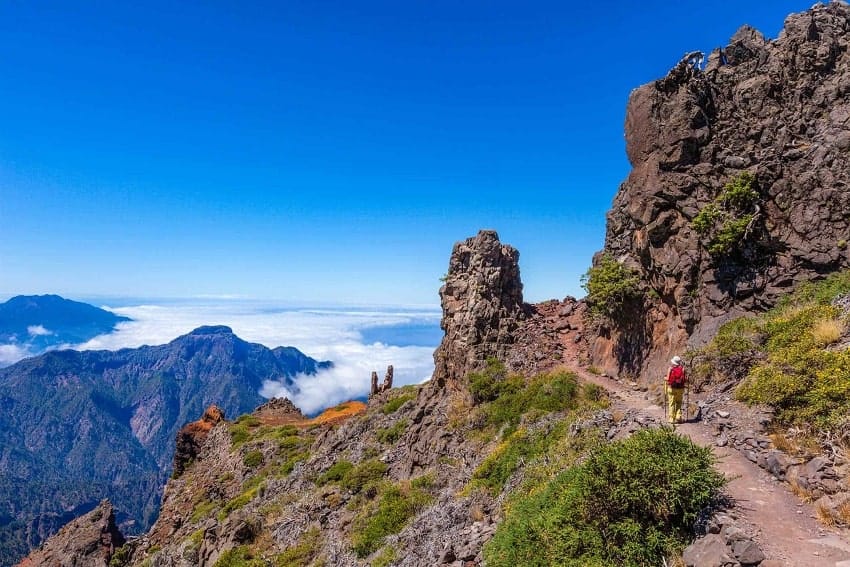
The island of La Palma offers breathtaking landscapes, remote beaches, imposing volcanoes, dense forests and incomparably starry skies.
With its 708 square kilometres, an elevation of 2.426m and its shape of a heart it is the most Western island of the Canary Island chain. Like every island in this archipelago, La Palma was created by volcanic activity. It is one of the youngest of the seven islands, dating back some 1.7 million years. The volcanic origin of La Palma is still clearly recognizable today, especially the southern part of the island with the dormant volcano Teneguía which last erupted in 1971, and offers interesting insights into its geological past.
The year-round mild climate with average temperatures between 18 and 27 degrees Celsius produce spring-summerlike weather as a result of the northeast trade winds.
This weather phenomenon is responsible for a pleasant subtropical climate and a rich green vegetation that prevails because of the humidity carried along in the trade winds. These moisture rich winds at certain times of the year also create a spectacular waterfall of clouds cascading down the central mountain faces and hence the nicknames Isla Verde – Green Island and Isla Bonita – Beautiful Island.
The unique geological structure of the island with its variety of vegetation zones and microclimates that are rarely found in the world on such a small area make this island a miniature universe. Each area of the island varies completely from another. In 1983 La Palma was declared a UNESCO biosphere reserve.
Another special feature of La Palma is the unique night sky. Due to its location in the Atlantic Ocean, sparse population, minimum light pollution and highest mountain peak Roque de los Muchachos 2.426m, the island was chosen as the location for one of the largest and modern observatories in the world.
The official population of the island is approximately 80,000 people. Traditional festivals such as the Bajada de la Virgen or Los Indianos carnival, famous far beyond the island’s borders, bear witness to the zest for life of the local people (Palmeros). Not only the geographical location, but also the numerous immigrants from Central and South America show a variety of Hispanic influences in island life, cuisine and cultural.
Read more...

